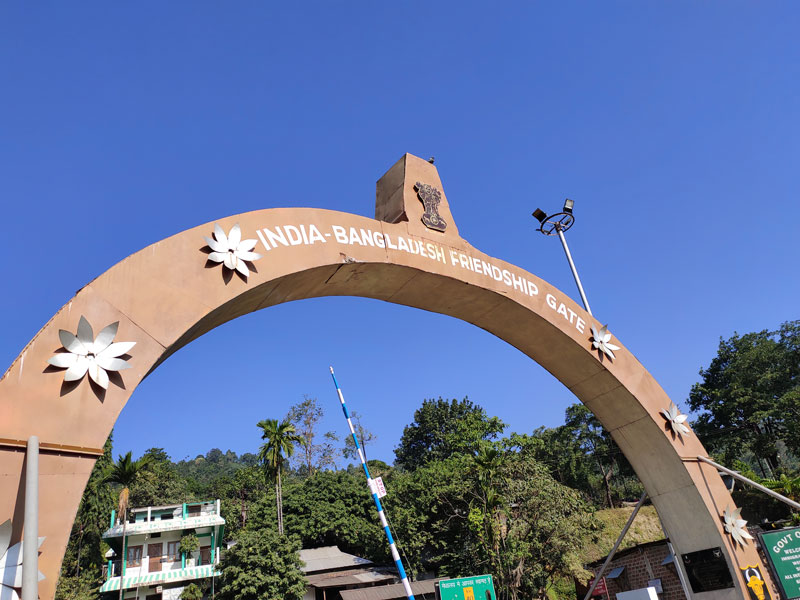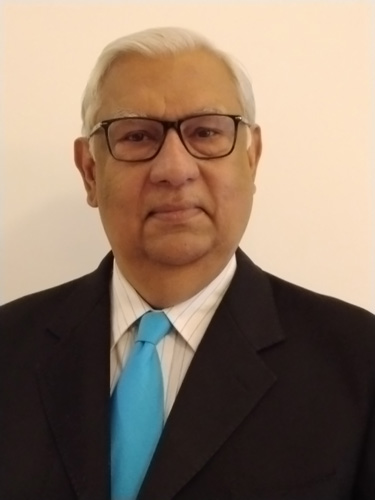The new era of India-Bangladesh ties
On 26th March 1971, Bangabandhu Sheikh Mujibur Rehman, gave a public call for independence in Dhaka. Military dictator Gen Yahya Khan unleashed the Pakistani Army and its local collaborators, resulting in a genocide which ultimately killed around 3 million people, left over 200,000 women raped and drove over 10 million refugees into India.
This nine-month long bloody War of Liberation followed. PM Indira Gandhi led from the front and India’s defence forces fought jointly with the Mukti Bahini of Bangladesh. Pakistan’s army surrendered on 16th December, the day India celebrates as “Victory Day” and Bangladesh as “Bijoy Dibosh”. The emergence of Bangladesh as an independent nation shattered the two-nation theory and redrew the map of South Asia. The Cold War was raging in 1971 and the USA was aligning with China against the Soviet Union, with Pakistan as the mediator. Then American President Richard Nixon and his notorious henchman Henry Kissinger, ignored one the worst genocides in recent history. The Soviet Union supported India.
The enduring bond between India and Bangladesh rest on the memories of the Liberation War, shared cultural and linguistic affinity, apart from mutual and overlapping interests as neighbouring countries. Undoubtedly, the maximum progress in bilateral ties has been achieved during periods when PM Sheikh Hasina has been in power. PM Modi’s recent visit to Bangladesh, his first foreign tour during the Chinese-origin COVID pandemic, was a clear signal of support to PM Sheikh Hasina and reinforced bilateral ties, during a year in which Bangladesh is celebrating the 50th year of Independence, 100th birth anniversary of Bangabandhu and the 50th year of diplomatic relations with India. PM Modi was the guest of honour at these celebrations.
Enhancing connectivity
Connectivity has emerged as a fundamental pillar in bilateral ties, fostering greater trade, investment, movement of people, promoting economic integration and building bilateral, regional and global supply chains. The Coastal shipping and trans-hipment agreements have facilitated transportation of goods from Indian ports to Chittagong for onward delivery by road to Agartala and beyond. Several new routes have been activated along waterways. More passenger trains have been introduced and an important trade facilitator – containerized cargo- is moving by rail.
In early March 2021, the two PMs opened the Maitri bridge connecting Sabroom and Ramgarh which will provide better connectivity to Chittagong port and Agartala. They met again virtually on 17 December 2020 and re-opened the Haldibari-Chilaihati rail link, for the “Milap Express”, a passenger train. Other connectivity projects include a pipeline from Numaligarh in Assam to Bangladesh for supply of hydrocarbons and the Agartala-Akhaura road-rail link which will enable trains to operate from Delhi to Agartala via Bangladesh. Passenger bus services already link Dhaka with Kolkata, Guwahati and Shillong and passenger trains link Dhaka with Kolkata and Khulna with Kolkata. Electricity grids are connected and India exports power to Bangladesh while the latter has permitted India to establish an internet link between Cox’s Bazaar’s undersea cable gateway and Agartala for faster internet connectivity to India’s north-eastern states. Bangladesh has also agreed to join the trilateral highway project between India, Myanmar and Thailand, giving added traction to India’s “Act East Policy”.
Bangladesh today is India’s largest trading and development partner in SAARC. India has the number of scholarships is issuing the largest number of visas to Bangladeshi visitors. Defence and security ties have also grown. Bangladesh was the first country to receive COVID vaccines from India. Though Bangladesh is a Less Developed Country (LDC), her economic performance has been lauded globally and it is on track to be re-designated in 2026, as a developing country, like India. Even during the COVID pandemic,
A stellar success
Bangladesh has recorded 4-5% GDP growth. Bangladesh has overtaken Pakistan in per capita income and her exports top USD 40 billion, as compared to Pakistan’s USD 25 billion.PM Sheikh Hasina’s policies have contributed to this stellar economic success. A bilateral Free Trade Agreement (FTA) and a Comprehensive Economic Partnership Agreement (CEPA) are the logical next steps to propel trade upwards from around USD 9-10 billion per annum. Recent bilateral agreements in sectors like agriculture, solid waste disposal, conservation of elephants, disaster management indicate the shift in priority for Climate Change adaptation and mitigation.
Bangladesh’s 1972 Constitution was firmly anchored in secular principles. The assault on secularism began in 1977, when military dictator Gen Ziaur Rahman removed the principles of secularism and socialism and introduced “Bismillah-ur-Rahman-ur-Rahim” into the Constitution. Gen Muhammad Ershad, the dictator who succeeded Gen Zia, introduced Islam into the Constitution as the State religion via the 8th amendment. Though PM Sheikh Hasina has re-introduced secularism she did not the touch the 8th amendment. In a country which has 90% Muslims, religion remains a sensitive issue.
During PM Modi’s recent visit there were demonstrations opposing the visit by the fundamentalist Islamic organization, Hefazet-e-Islam. Hefazet controls a nationwide chain of madrassas which receives funds from Islamic foundations abroad, mostly in the Gulf countries. Several demonstrators were killed in clashes with the police. Hefazet has risen to prominence as the leading anti-secular organization to replace the Jamaat-e-Islami [JeI]. JeI leaders had fled Bangladesh after independence and were rehabilitated by Zia who joined hands with fundamentalist and pro-Pakistani elements to promote an Islamic version of Bangladeshi nationalism. PM Sheikh Hasina established a War Crimes Tribunal which convicted most of the top JeI leaders and were executed. This broke the back of the JeI.
Counter-radicalisation
To counter-balance her crack down on violent Islamic radicals, she engaged the Hefazet who have put forward a 13-point demand that include declaring Ahmadiyyas or Qadianis as non-Muslims, removal of statues from all public places, full implementation of Sharia laws, expunging writings of Hindus from text books, changing the national anthem written by Nobel Laureate Rabindranath Tagore, banning inheritance rights to women and removal of all girls from schools after class four. Hefazet cadres have engaged in bloody clashes with secular protestors and AL cadres, vandalizing statues, not sparing those of even Bangabandhu. Initially, PM Sheikh Hasina accommodated some demands like removing some statues and sculptures from public places, expunging some writings by Hindu authors from textbooks and treating madrassa degrees on par with University degrees for government employment. An emboldened Hefazet is now baring its fangs demanding more. Their Wahaabi agenda is directly linked to funding from the Gulf countries. There is speculation that Hefazet received funds from China and Pakistan to mount anti-PM Modi demonstrators and also keep PM Hasina under pressure. The Islamist challenge is a direct threat to secularism.
Increased strategic engagement with Bangladesh will help in dealing with remaining issues like river water sharing, border management, migration, terrorism, Islamic radicalism, none of which can be solved overnight. The problem of the Rohingya refugees and the China factor are long-term issues that will demand deft handling and mutual understanding. The bilateral relationship will continue to expand and grow, based as they are on strong foundations, a high level of trust and political consensus between the leadership of the two countries.
(A version of this article first appeared in the Deccan Herald on April 4, 2021)



